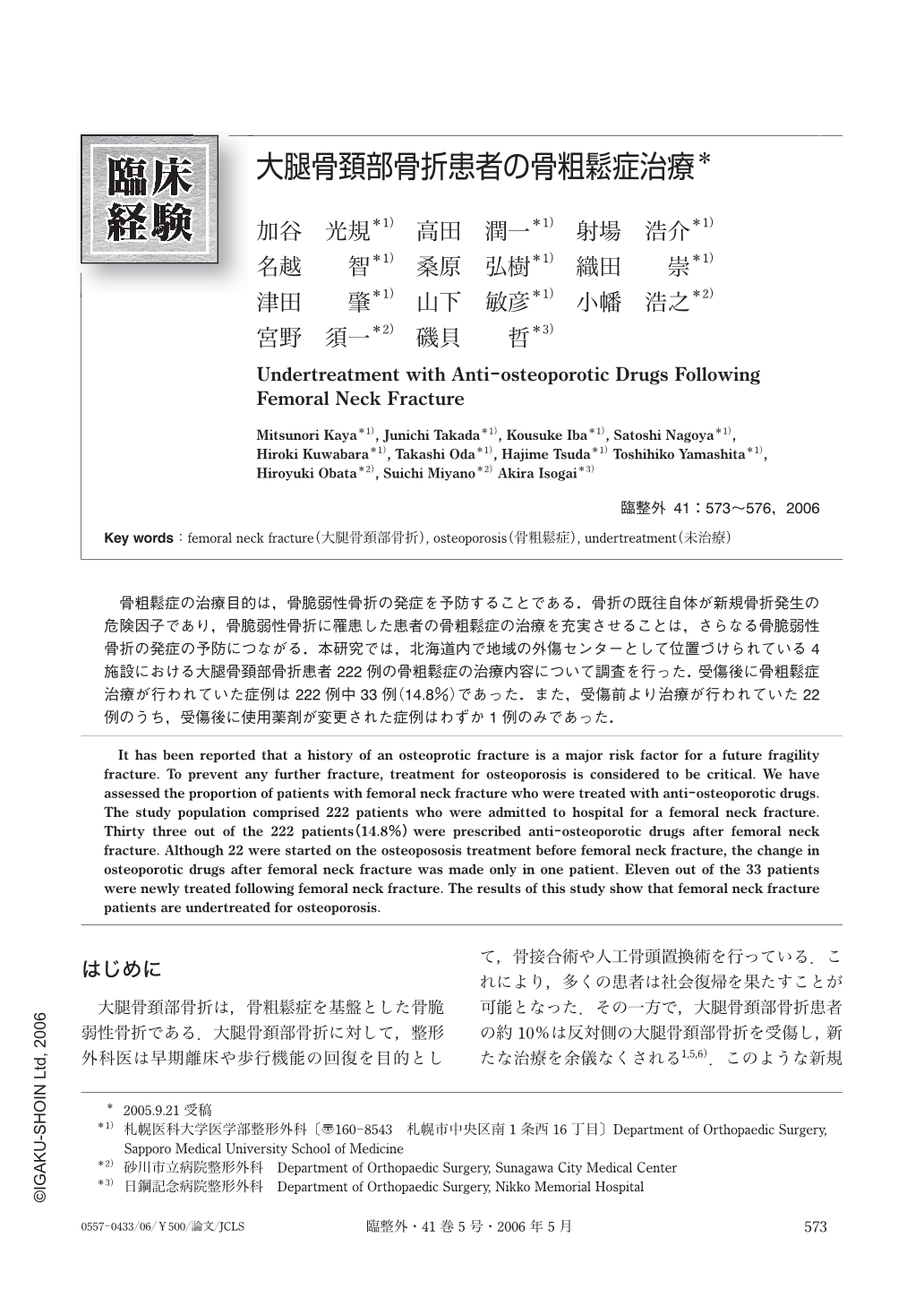Japanese
English
- 有料閲覧
- Abstract 文献概要
- 1ページ目 Look Inside
- 参考文献 Reference
骨粗鬆症の治療目的は,骨脆弱性骨折の発症を予防することである.骨折の既往自体が新規骨折発生の危険因子であり,骨脆弱性骨折に罹患した患者の骨粗鬆症の治療を充実させることは,さらなる骨脆弱性骨折の発症の予防につながる.本研究では,北海道内で地域の外傷センターとして位置づけられている4施設における大腿骨頚部骨折患者222例の骨粗鬆症の治療内容について調査を行った.受傷後に骨粗鬆症治療が行われていた症例は222例中33例(14.8%)であった.また,受傷前より治療が行われていた22例のうち,受傷後に使用薬剤が変更された症例はわずか1例のみであった.
It has been reported that a history of an osteoprotic fracture is a major risk factor for a future fragility fracture. To prevent any further fracture, treatment for osteoporosis is considered to be critical. We have assessed the proportion of patients with femoral neck fracture who were treated with anti-osteoporotic drugs. The study population comprised 222 patients who were admitted to hospital for a femoral neck fracture. Thirty three out of the 222 patients (14.8%) were prescribed anti-osteoporotic drugs after femoral neck fracture. Although 22 were started on the osteopososis treatment before femoral neck fracture, the change in osteoporotic drugs after femoral neck fracture was made only in one patient. Eleven out of the 33 patients were newly treated following femoral neck fracture. The results of this study show that femoral neck fracture patients are undertreated for osteoporosis.

Copyright © 2006, Igaku-Shoin Ltd. All rights reserved.


